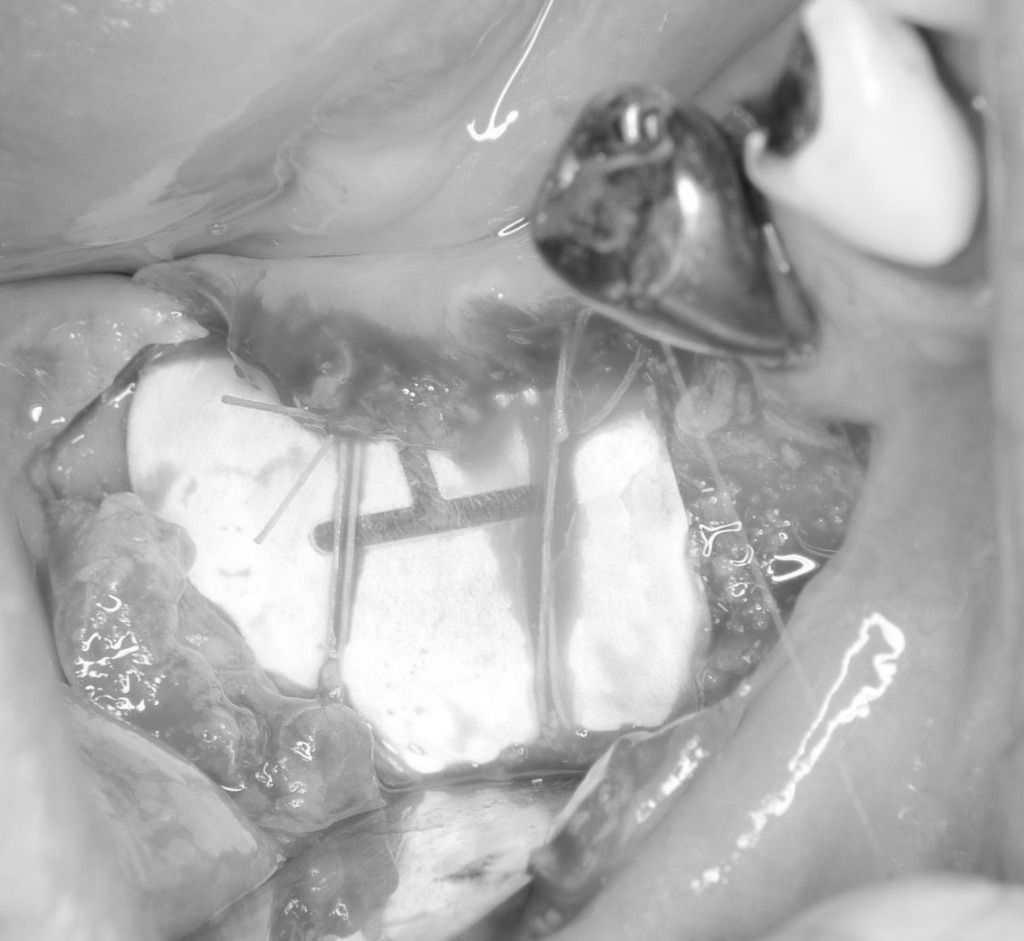A patient who lost implants by inflammation wanted to have implants again. However, he lost not only implants, but also some amount of bone which had supported the former implants. Guided Bone Regeneration surgery made a chance to accept the next implants. The process was challenging and time consuming, The surgery requires a technique called release incision to close flaps of gum after bone graft packing to bone loss area. The technique was issued in a dental journal by an Italian dentist. The idea has been helping many dentists and patients in the world. Since the crowns setting, it has had no problems so far.

(Fig.1) A cross section of CT before treatment. Concave shape means bone loss caused by inflammation around the former implant.

(Fig.2) 6 months after guided bone regeneration surgery.

(Fig.3) 5 years after the crown setting on the implant. It has been stable so far.

(Fig.4) A transvers section of CT before treatment showing wide bone loss.

(Fig.5) 6 months after G.B.R. Framework structure above bone loss area is non-resorbable membrane.

(Fig.6) 5 years after the crown setting on the implants.

(Fig.7) Wide bone loss at the top of bone.

(Fig.8) Bone graft filling.

(Fig.9) The bone graft was covered by non-resorbable membrane.

(Fig.10) suturing.

(Fig.11) 6 months after the surgery.

(Fig.12) After removing the membrane, the bone loss area was filled with new bone. Compare with Fig. 7.

(Fig.13) The implants insertion.

(Fig.14) The crowns setting.










コメント